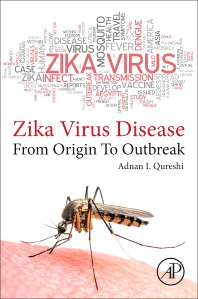Books in Microbiology and virology
Books in Microbiology and virology
Elsevier's Microbiology & Virology collection provides comprehensive coverage of viruses and microorganisms, addressing their impact on human, animal, and plant health. It includes topics such as prevention, treatment, and research of viral diseases like coronaviruses, flaviviruses, and viral hemorrhagic fevers. The collection delves into fields like Bacteriology, Mycology, and Microbial genetics, focusing on their roles in environmental, agricultural, and health-related contexts. This resource serves as a vital tool for scientists, facilitating the study of viruses and microorganisms and enabling the development of effective strategies for infectious disease prevention, diagnosis, and control.
- 1st Edition
- Volume 4
- November 27, 2017
- Douglas B. Sawyer + 1 more
- English
- Hardback9 7 8 0 1 2 8 0 9 6 5 7 4
- eBook9 7 8 0 1 2 8 0 5 1 5 4 2

Encyclopedia of Cardiovascular Research and Medicine
- 1st Edition
- November 23, 2017
- Sanaa M. Kamal
- English
- Paperback9 7 8 0 1 2 8 0 3 2 3 3 6
- eBook9 7 8 0 1 2 8 0 3 2 3 4 3

Hepatitis C in Developing Countries
- 1st Edition
- November 17, 2017
- Victor R. Preedy + 1 more
- English
- Hardback9 7 8 0 1 2 8 0 9 8 5 3 0
- eBook9 7 8 0 1 2 8 0 9 8 5 4 7

HIV/AIDS
- 1st Edition
- November 13, 2017
- Adnan I. Qureshi
- English
- Paperback9 7 8 0 1 2 8 1 2 3 6 5 2
- eBook9 7 8 0 1 2 8 1 2 5 4 7 2

zika virus disease
- 1st Edition
- November 13, 2017
- Boriana Marintcheva
- English
- Paperback9 7 8 0 1 2 8 1 0 5 1 4 6
- eBook9 7 8 0 1 2 8 1 0 5 1 5 3

Harnessing the Power of Viruses
- 1st Edition
- October 27, 2017
- M. A. Hayat
- English
- Paperback9 7 8 0 1 2 8 0 9 8 1 9 6
- eBook9 7 8 0 1 2 8 0 9 8 9 7 4

Immunology
- 2nd Edition
- October 19, 2017
- Scott R. Barnum + 1 more
- English
- Paperback9 7 8 0 1 2 8 1 0 4 2 0 0
- eBook9 7 8 0 1 2 8 1 0 4 2 1 7

The Complement FactsBook
- 1st Edition
- Volume 99
- October 12, 2017
- English
- Hardback9 7 8 0 1 2 8 1 2 5 9 8 4
- eBook9 7 8 0 1 2 8 1 2 5 9 9 1

In Loeffler’s Footsteps – Viral Genomics in the Era of High-Throughput Sequencing
- 1st Edition
- Volume 98
- September 21, 2017
- English
- Hardback9 7 8 0 1 2 8 1 2 3 9 6 6
- eBook9 7 8 0 1 2 8 1 2 3 9 7 3

Advances in Parasitology
- 1st Edition
- September 15, 2017
- Huy P. Pham + 1 more
- English
- Paperback9 7 8 0 1 2 8 0 3 9 9 9 1
- eBook9 7 8 0 1 2 8 0 4 0 3 0 0

Transfusion Medicine, Apheresis, and Hemostasis